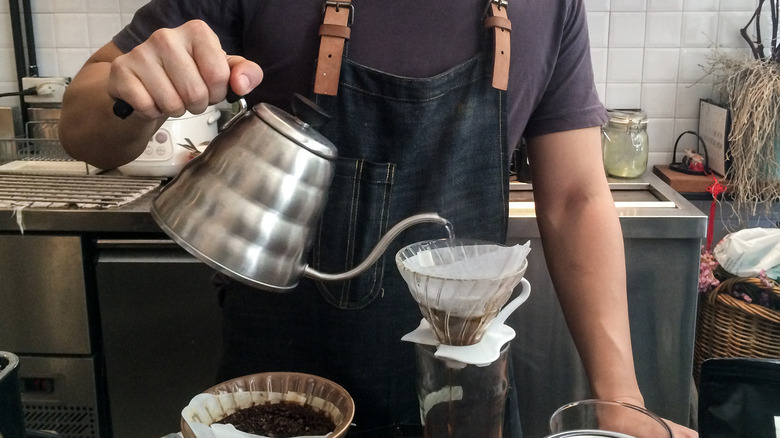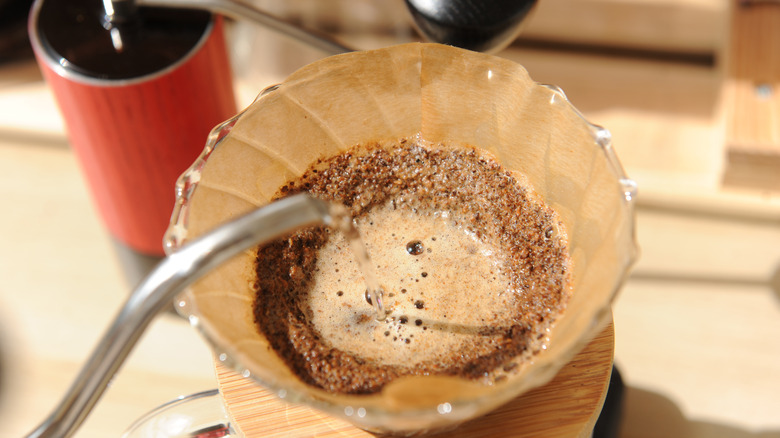Why A Gooseneck Kettle Is Key For Perfect Pour Over Coffee
If you've ever made pour-over coffee, then you may know that the water you use, along with the water's flow and temperature, can play a crucial role in the quality of your cup. As noted by Sunset, filtered water should be used when making pour-over and it should be heated to around 200 degrees Fahrenheit for the best brew. Making a pour-over is an act of balancing the freshly ground beans with the perfect amount of hot water.
But believe it or not, there's more to pour-over coffee than just using high-quality coffee and filtered hot water. If you really want to replicate the coffeehouse quality of pour-over coffee at home, then consider investing in the right kettle for the job. What's known as a gooseneck kettle is what you should look for, since there's a reason many coffeehouses use this style to bring out all of the savory notes in a pour-over.
The design is key
The gooseneck kettle was designed for both tea and pour-over coffee, and as Java Presse explains, the style gets its name from the "long narrow spout" that looks much like the bird's neck. The kettle's unique appearance was created to allow the user to have complete control over the speed of the flowing water, making it the perfect tool for pour-over coffee. According to Sunset, the process of wetting the grounds evenly is known as the bloom phase and is an important step in making sure the extraction process is the best it can be.
By pouring water equally over the entire surface of the grounds, you are ensuring that you have the smooth flavor intended by the coffee roasters. As Home Grounds reports, the spouts on gooseneck kettles are slim and elongated so they allow the user to control how quickly the water will flow onto the coffee grounds. That being said, using the narrow spout of a gooseneck kettle with aid you in achieving an even pour and extraction, as well as a flavorful pour-over.
Now that you know the key to pour-over coffee perfection, compare a pour-over made with a gooseneck kettle to another style of pour and see if you can taste the difference. Remember that the freshness of the ground beans and the water's quality and temperature all affect the overall outcome of a pour-over!

